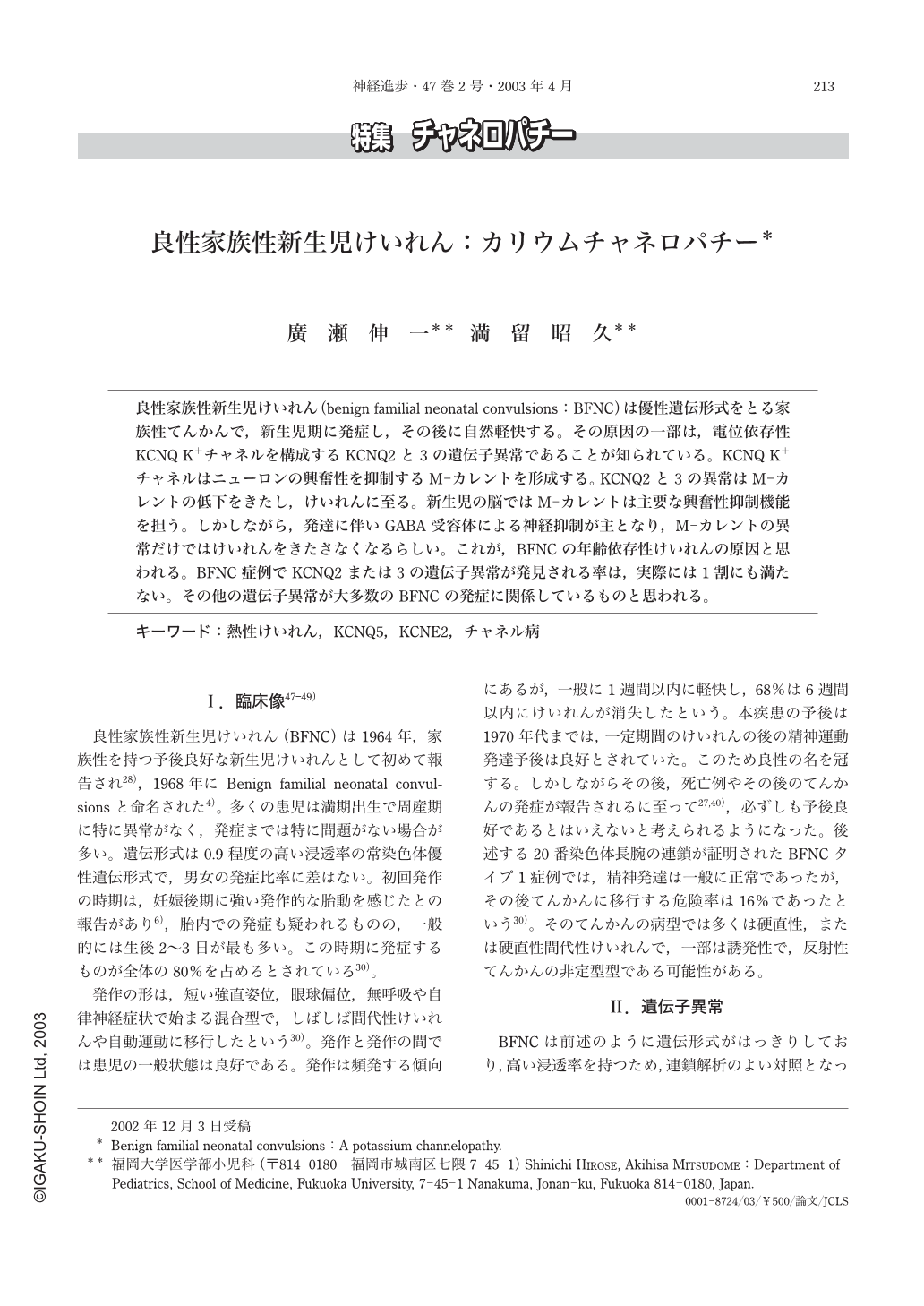Japanese
English
- 有料閲覧
- Abstract 文献概要
- 1ページ目 Look Inside
良性家族性新生児けいれん(benign familial neonatal convulsions:BFNC)は優性遺伝形式をとる家族性てんかんで,新生児期に発症し,その後に自然軽快する。その原因の一部は,電位依存性KCNQ K+チャネルを構成するKCNQ2と3の遺伝子異常であることが知られている。KCNQ K+チャネルはニューロンの興奮性を抑制するM-カレントを形成する。KCNQ2と3の異常はM-カレントの低下をきたし,けいれんに至る。新生児の脳ではM-カレントは主要な興奮性抑制機能を担う。しかしながら,発達に伴いGABA受容体による神経抑制が主となり,M-カレントの異常だけではけいれんをきたさなくなるらしい。これが,BFNCの年齢依存性けいれんの原因と思われる。BFNC症例でKCNQ2または3の遺伝子異常が発見される率は,実際には1割にも満たない。その他の遺伝子異常が大多数のBFNCの発症に関係しているものと思われる。
Benign familial neonatal convulsions(BFNC)is monogenic epilepsy inherited via an autosomal dominant trait and characterized by clusters of generalized and partial seizures afflicting exclusively, if any, neonates, and remits spontaneously. However, the incidence of subsequent epilepsy later in life is also higher in individuals who suffer from BFNC.
Mutations of two KQT-like K+-channel genes, the KCNQ2 and KCNQ3genes, were identified as the underlying abnormalities of BFNC. To date, some ten mutations of KCNQ2 have been discovered while only two mutations including one found in a Japanese pedigree with BFNC have been identified in KCNQ3. All mutations were heterozygous. KCNQ2 and KCNQ3 synergistically contribute to the formation of the M-current, which controls the sub-threshold electroexcitability of neurons. Dysfunction of either KCNQ2 or KCNQ3 can hence result in indistinguishable BFNC phenotype.
The exact pathomechanisms of age-dependency and propensity for future epilepsies in BFNC remain to be determined. We have recently shown that KCNQ K+-channels serve as a predominant inhibitory system in CNS during neonates, since GABAergic-transmission governs the inhibitory system afterwards. Thus, deficient KCNQ K+-channels cause convulsions during the neonatal period.
We have recently suggested that abnormalities of KCNQ2 and KCNQ3 are not necessarily the only causes of BFNC phenotypes, but rather other genes are probably involved in the pathogenesis of the BFNC phenotype, i.e., further genetic heterogeneity underlies this familial epilepsy. Deficiency of other ion channels and their modulation may result in the BFNC phenotype as well.

Copyright © 2003, Igaku-Shoin Ltd. All rights reserved.


